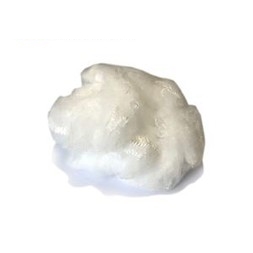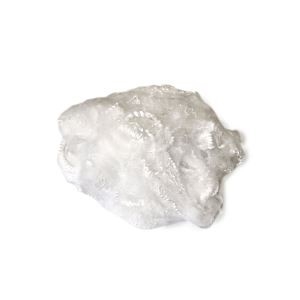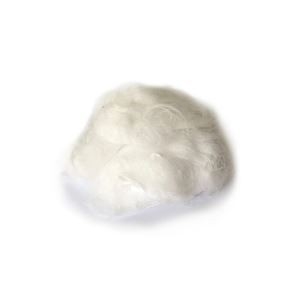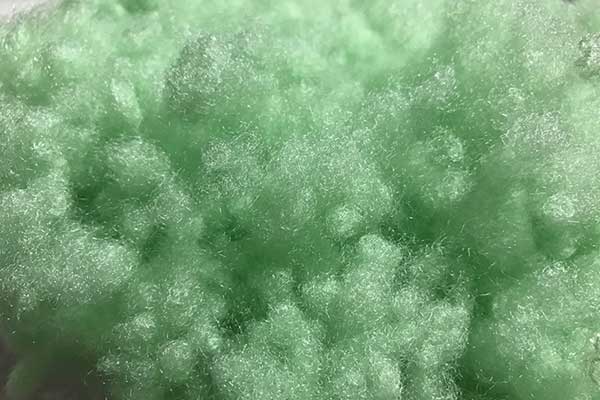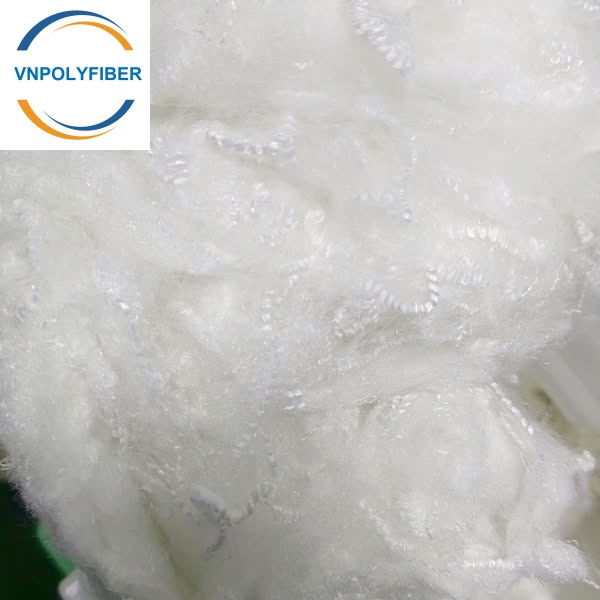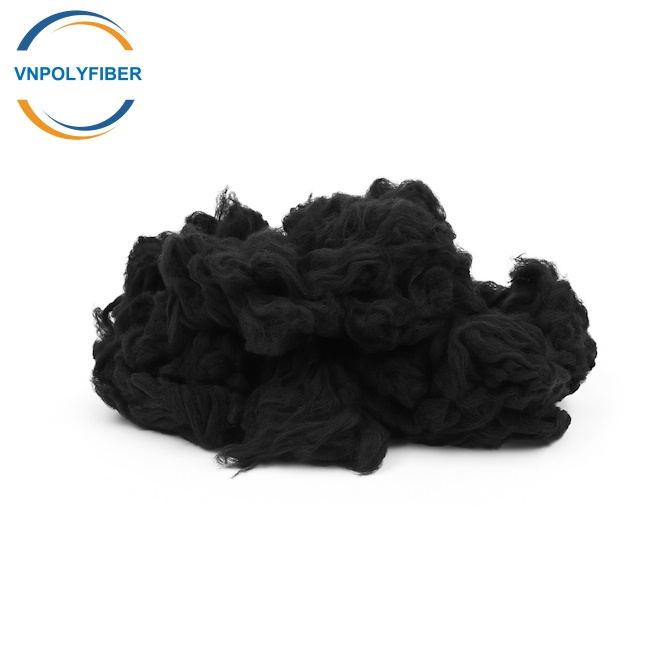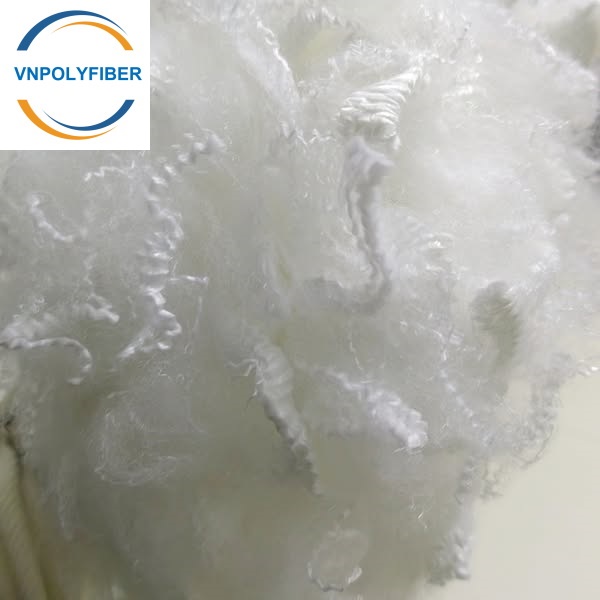Nylon Staple Fiber For Nonwoven
- Nylon Staple Fiber for Nonwoven applications is a high denier nylon staple fiber.
- It is suitable for various bonding processes including thermal bonding, needle punching, chemical bonding, and spunlace.
- The typical fiber specifications include 1.5D*38mm, 2D*51mm, 2.5D*51mm, and 3D*64mm, among others.
- Due to its non-toxicity, lightweight properties, excellent mechanical strength, wear resistance, and good corrosion resistance, polyamide is increasingly being utilized as a substitute for copper and other metals in the production of bearings, gears, pump blades, and other components.
PRODUCT DETAIL
What is Nylon Staple Fiber?
Nylon staple fiber is a synthetic fiber derived from nylon, produced in shorter, discrete lengths known as staple lengths, rather than as continuous filaments. Typically made from Nylon 6 or Nylon 6,6 polymers, these fibers are recognized for their durability, elasticity, and resistance to wear and tear. Staple fibers can be spun into yarn or combined with other fibers to produce blended fabrics, catering to a diverse array of applications across textiles, nonwovens, and industrial materials.
Key Characteristics of Nylon Staple Fiber
– High Strength and Durability: Known for exceptional tensile strength, nylon staple fiber exhibits resistance to tearing and breaking, even with prolonged usage.
– Elasticity and Resilience: The excellent elasticity of nylon staple fiber allows fabrics to stretch and return to their original shape, making it suitable for clothing that needs to maintain its fit over time.
– Abrasion Resistance: A notable advantage of nylon is its resistance to abrasion, ideal for applications prioritizing durability, such as carpets, upholstery, and various industrial uses.
– Moisture Resistance and Quick Drying: With minimal moisture absorption, nylon staple fiber dries rapidly and is resistant to water damage, which is particularly beneficial for activewear and outdoor fabrics.
– Softness and Comfort: When blended with natural fibers such as cotton or wool, nylon staple fiber enhances the softness and comfort of fabrics while retaining strength and resilience.
– Dyeability: Nylon is easily dyeable and maintains vibrant colors well, even after multiple washings or prolonged exposure to sunlight, making it a preferred choice in fashion and apparel applications.
Production of Nylon Staple Fiber
The production process typically involves the polymerization of nylon monomers (caprolactam for Nylon 6 or hexamethylenediamine and adipic acid for Nylon 6,6) to create long polymer chains. These chains are then melted and extruded into fibers. For staple fibers, continuous filaments are cut into specific lengths (typically between 1 to 10 cm), depending on their intended application. Subsequently, these staple fibers can be spun into yarns or utilized directly in nonwoven fabrics.
Applications of Nylon Staple Fiber
– Apparel: Commonly used in sportswear, hosiery, and undergarments for their elasticity, durability, and comfort. They are frequently blended with cotton, wool, or other synthetic fibers.
– Outdoor Gear: The water-resistant and quick-drying properties of nylon make it an excellent choice for outdoor clothing and accessories such as jackets, backpacks, and tents.
– Carpets and Rugs: Extensively utilized in carpets and rugs due to their durability, softness, and abrasion resistance, nylon fibers perform well under heavy foot traffic and maintain their appearance over time.
– Upholstery and Furnishings: Nylon fibers are integral in upholstery fabrics and furnishings, providing the strength and durability needed for furniture and automotive seating.
– Nonwoven Fabrics: Used in nonwoven applications such as industrial filters, insulation materials, geotextiles, and medical products, nylon staple fibers offer strength and flexibility.
– Industrial Applications: Found in diverse industrial applications, including tire cords, conveyor belts, and ropes, nylon staple fibers are essential for their strength, abrasion resistance, and durability.
Benefits of Nylon Staple Fiber
– Improved Strength: High tensile strength makes nylon fibers an excellent choice for heavy-duty applications.
– Versatility: Can be blended with other fibers to create a broad spectrum of textiles with varying properties.
– Low Maintenance: Fabrics made from nylon staple fibers are easy to care for, wrinkle-resistant, and machine washable.
– Sustainability: Nylon can be recycled, with growing demand for recycled nylon staple fibers to lessen environmental impact.
Disadvantages of Nylon Staple Fiber
– Non-biodegradable: Like most synthetic fibers, nylon is not biodegradable, which raises environmental concerns, though recycling efforts are aiding in addressing this issue.
– Heat Sensitivity: Nylon is sensitive to high temperatures, potentially melting or deforming in such conditions, which restricts its use in applications requiring heat resistance.
Technical Parameter
1. Fiber Type:
- Material: Nylon 6 or Nylon 6,6 (Polyamide)
2. Denier/Decitex (Fiber Fineness):
- Range: 0.9 – 15 Denier (dtex 1 – 16.7)
- Typical Denier for Apparel: 1.5 – 6 denier
- Denier for Industrial Applications: Up to 15 denier
- Definition: Denier refers to the weight in grams of 9,000 meters of fiber. Lower denier numbers indicate finer fibers, while higher numbers indicate thicker, heavier fibers.
3. Cut Length (Staple Length):
- Range: 25 mm to 120 mm (varies based on application)
- Common Cut Lengths:
- For spinning: 38 mm, 51 mm, 64 mm
- For nonwovens: 51 mm, 76 mm, 120 mm
- Definition: The length of the individual fibers after they have been cut from continuous filament. This is typically measured in millimeters.
4. Tenacity (Fiber Strength):
- Range: 4.0 – 7.5 g/denier (high tenacity fibers can go higher)
- Definition: Tenacity measures the breaking strength of the fiber, expressed in grams per denier (g/d). High tenacity fibers are used for applications where strength is critical, such as in industrial textiles.
5. Elongation (Stretch and Elasticity):
- Range: 18% – 40%
- Typical Values:
- For apparel: 25% – 35%
- For industrial use: Lower elongation is often required.
- Definition: The percentage elongation measures how much the fiber can stretch before breaking. Higher elongation indicates better elasticity and recovery, which is important in apparel and upholstery.
6. Moisture Absorption:
- Range: 4.0% – 4.5% at 65% RH (Relative Humidity)
- Definition: Nylon staple fibers are hygroscopic, meaning they can absorb moisture from the air, which improves comfort in garments and other textile applications. However, they still dry quickly compared to natural fibers like cotton.
7. Melting Point:
- Nylon 6: ~215°C (419°F)
- Nylon 6,6: ~250°C (482°F)
- Definition: The temperature at which the fiber begins to melt. Nylon fibers are sensitive to heat, so this is an important parameter for processing and end-use considerations.
8. Specific Gravity:
- Value: 1.14 g/cm³
- Definition: This is the density of the nylon fiber compared to water. It affects how heavy or light the fabric or material will feel.
9. Crimp (Fiber Texture):
- Crimp Frequency: 8 – 14 crimps per inch (CPI) for apparel applications.
- Crimp Type: Textured, flat, or latent crimp depending on the application (e.g., apparel vs. industrial).
- Definition: Crimping introduces a wave or curl to the fiber, increasing its bulk, elasticity, and texture. Crimped fibers are important for achieving good spinning performance and fabric loft in textiles.
10. Color:
- Options: Raw white, black, or solution-dyed
- Solution-Dyed: Fibers are dyed during the extrusion process, offering better colorfastness and UV resistance.
- Definition: Nylon staple fibers can be dyed post-production or produced in a specific color through solution dyeing, depending on the end-use application.
11. Luster:
- Options: Bright, semi-dull, dull
- Definition: Luster refers to the shine or sheen of the fiber. It can be adjusted to achieve the desired visual appearance of the final product, whether matte or glossy.
12. Thermal Shrinkage:
- Range: 1.0% – 3.0% at 100°C
- Definition: Thermal shrinkage measures the degree to which the fiber contracts when exposed to heat. This is important in processing, especially in high-temperature environments like heat setting.
13. Spinnability:
- Properties: Excellent spinning properties in both ring and open-end spinning systems, with good cohesion between fibers.
- Blends: Can be blended with cotton, wool, polyester, and other natural or synthetic fibers to create versatile fabrics with mixed properties (e.g., stretch, softness).
Video
FAQ
1. What do you offer?
We produce recycled hollow conjugated siliconized and non-siliconized polyester staple fiber mainly.
We also supply home textile machineries and products at factory origin and its price.
2. What is it used for?
Our fiber is widely used in filling, non-woven fabric, spinning, bedding stuff, home textile, automotive interiors…
3. Are you a factory or a trading company?
We are a factory specialized in polyester staple fiber for many years but now we also have our own professional trading company. We will source many types of textile products such as yarn, PP fibers from others to supply our own customers as well. We also provide our own customers with other related products such as: Foam, Pillows, Cushions, Toys, Down/ Feather,…
4. Where is your factory location?
Our factory locates in the north and the south of Vietnam. You can visit us from Ho Chi Minh City and Hanoi City, Vietnam. You could contact our salesman to fetch you if visiting.
5. Can you accept free sample?
Yes, the hand sample is free when not exceed 1 kilograms. Upon price confirmation, we will provide a sample within 2-3 days; the freight cost will be charged to client.
6. Can you provide ODM service?
Yes, we work on ODM orders. Which means size, material, quantity, design, packing solution, etc, will depend on your requests, and your logo will be customized on our products.
7. How about your quality? What’s the minimum order Quantity (MOQ)?
Please try a trial order, you will know it. The MOQ is 23,000 Kilograms/order, but the price will be lower if you order bulk volume.
8. Can I mix different items in one order?
Sure, you can mix any products we can provide.
9. How can you guarantee the product quality?
We have experienced QC team. We control not only productive process but also raw material. In addition, we have different kinds of testing instrument to help us guarantee the product quality.
10. What’s the payment terms?
L/C at sight, 30% TT in advance are mostly accepted; other terms shall be negotiable by both sides
For more information, please feel free to contact :
Mr. Tony Tan
Mobile number: +84 90 466 5251 (Whatsapp/Wechat/Viber/Signal)

